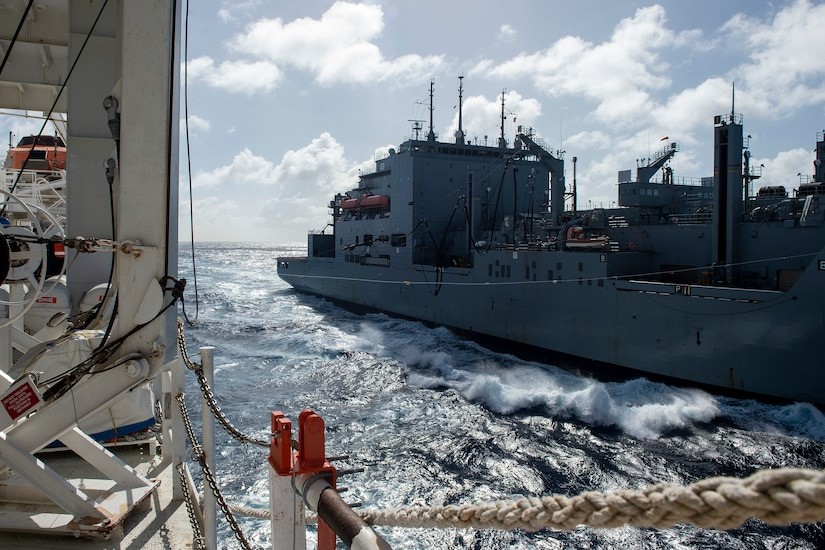In 1962 the Soviet Union began installing missiles in Cuba that could launch attacks on U.S. cities. In response, John F. Kennedy blockaded the island nation to prevent Nikita Khruschev’s plan from going forward. Despite the dramatic risk that brought the world to the edge of a nuclear confrontation, the nation rallied around the young President. It was a strategic and moral victory for America and the West.
Sixty- two years later, the Russian navy has deployed a nuclear submarine and support vessels to the same general area. Along with China and Iran, Moscow’s military has been making significant inroads throughout the western hemisphere. The response by the media has been a collective yawn. Robert K. Kennedy Jr., nephew of the late JFK, in a truly incredible example of bad timing, has called for cutting the defense budget in half.
The new Russian naval presence has teeth. According to a report by Zona Militar . The information released by the Cuban government reveals that “…the flotilla is led by the nuclear-powered attack submarine Kazan (K-561), accompanied by the missile frigate Admiral Gorshkov and support vessels. the Yasen-M class [is] one of the most modern in service with the Russian Navy. Conceived as part of the Russian Armed Forces’ strategic renewal projects, their design was based on experiences gained with ships from the Soviet era, such as the Akula and Alfa classes. With a displacement of 8,600 tons, these submarines are equipped with vertical launchers compatible with the Kalibr and Oniks anti-surface missiles. They also have 10 533mm torpedo tubes. In addition to the Kazan, the flotilla consists of the Admiral Gorshkov missile frigate, the lead ship of its namesake class, and one of the most advanced surface vessels in the Russian Navy …One of their main capabilities is the ability to conduct anti-surface attacks using the hypersonic 3M22 Zircon missiles.”
The Kremlin flotilla is not an isolated instance in the western hemisphere. Russian inroads into Latin America have increased significantly in recent years, according to the Army University Press. Russian inroads into Latin America have increased significantly in recent years. The National Defense University Press Russia’s growing strategic presence in the U.S. near abroad empowers anti-U.S. populist authoritarian regimes while gaining potentially important access points for Russia in the Western Hemisphere. Understanding and developing a comprehensive response to this asymmetric threat should be a hemispheric priority as the United States faces numerous strategic challenges with waning influence in the region.
In one way the latest Caribbean challenge is more severe than the 1962 Cuban Missile Crisis. Instead of just one adversary, The U.S. Naval Institute notes that China has a worrisome presence in the region. In testimony before the House Armed Services Committee, Army Gen. Laura Richardson, the U.S. Southern Command’s commander, reports that China has the ability to flip its big money investments in the Caribbean and South American – ports, 5G telecommunications networks, space infrastructure and clean energy – from civilian to military use. Maj Gen Evan L. Pettus, USAF, Commander of 12th Air Force (Air Forces Southern) outlined his concern last year: “I underestimated the extent of the influence operations conducted by the Chinese Communist Party–led government of the People’s Republic of China (PRC) in the region. As I approach the one-year mark in my command, I am increasingly concerned about the strategic risks the PRC’s actions pose to the national security interests of the United States and the sovereignty of our partner nations in Latin America. The PRC adopts various methods to enhance its access and influence in the Western Hemisphere, employing both subtle and overt approaches. The PRC establishes aggressive and coercive economic ties with nations in the region and uses those ties to exert deep influence over local and national governments. Levers of power include building and operating critical infrastructure, controlling information technology networks, and monopolizing access to vital supply chains. Additionally, the PRC strategically constructs ports near crucial maritime chokepoints that could potentially facilitate future military activities. Their investment in critical infrastructure extends to ostensibly civilian space facilities, which thinly veil their military connections and potential military applications.”
The article concludes tomorrow
Photo: The dry cargo/ammunition ship USNS William McLean refuels the hospital ship USNS Comfort off the coast of Panama (US DOD photo, 2018)
